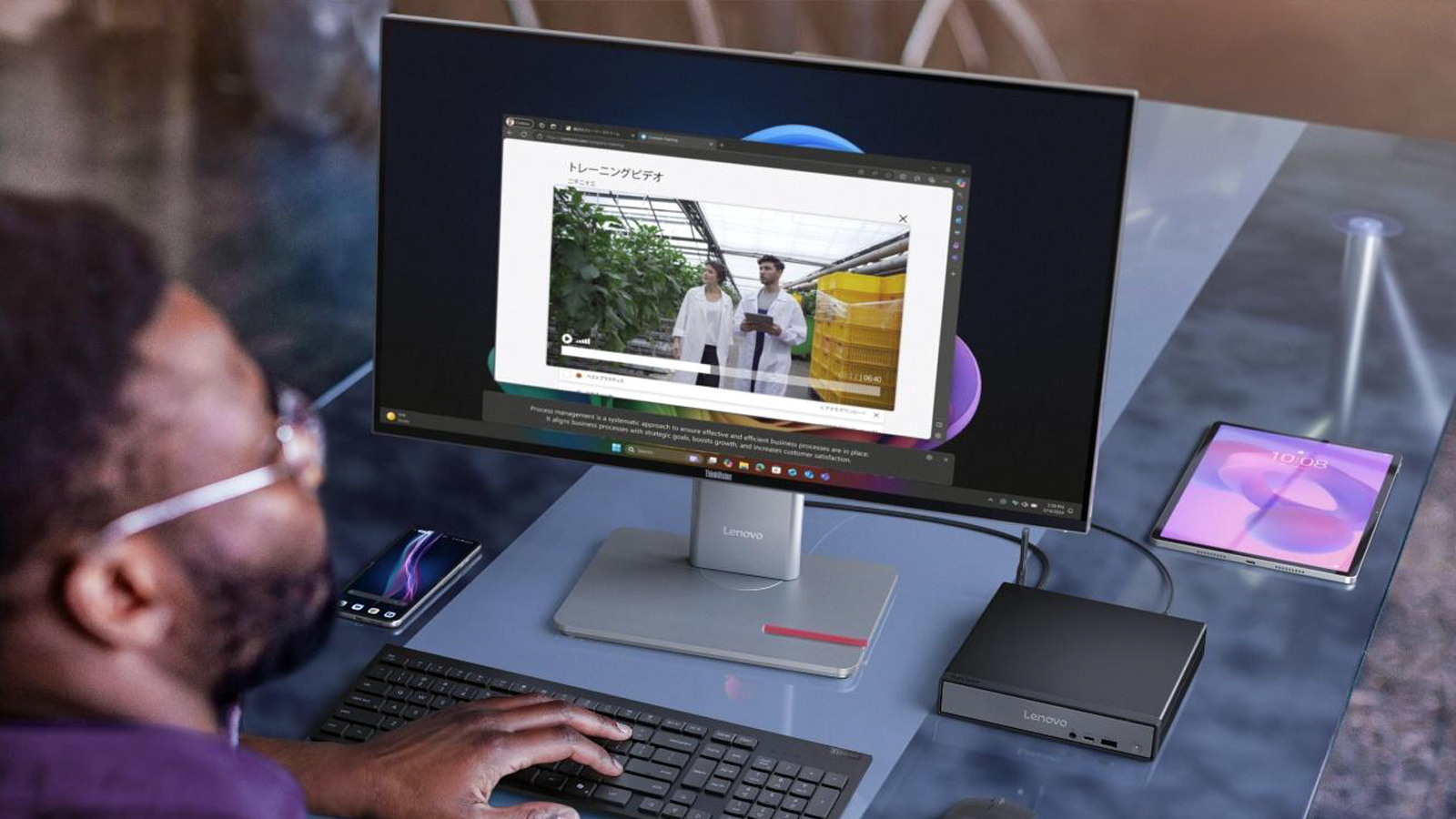Next-gen Snapdragon X2 chips for PCs to boost core count from 12 to 18, says report

Significant new details of a next-generation Qualcomm Snapdragon X2 processor for Windows PCs have been shared Germany's WinFuture (machine translation). The big news is that the new X2 chips may come to the PC market with up to 18 Oryon V3 cores, that's 50% more than the current generation Qualcomm chips for PCs. The extra, more powerful, cores will help 'Snapdragon X Elite Gen 2' chips in the high-end laptop market and in desktops, reckons the source.
This isn't the first we have heard about the generational successor to Qualcomm's Snapdragon X Elite processors for Windows-based client PCs. Last October from the same source we heard that Qualcomm had already got test silicon for the Snapdragon X2 chips, which were codenamed Project Glymur, and featured the model number SC8480XP.
Today, the deeper dive into Snapdragon X2 details also focuses on the SC8480XP. However, this time, WinFuture says it has had eyes on undisclosed import-export databases and spews forth some important tech specs.
In the intro, we mentioned that the next-gen Windows PC chips from Qualcomm might move up to 18 cores, from 12. That's not all. WinFuture has spied documents which suggest the new Qualcomm SiP (system in package) will fold in both RAM and flash storage. Specifically, the SC8480XP features 18 cores, 48GB of SK hynix RAM, and a 1TB SSD onboard.
Qualcomm comes at PCs from a different heritage to traditional players like AMD and Intel, so perhaps we shouldn't be so surprised at its different take with the SiP implementation. The source also indicates that Qualcomm is testing the next-gen processor with an all-in-one cooler and 120mm radiator. It may be trying to see what advantages a desktop could bring compared to the thermally constrained portables its chips usually find a home.
As if there weren't enough Qualcomm codenames numbers and brands mentioned already, WinFuture indicates the upcoming chips might fall under the 'Snapdragon X2 Ultra Premium' brand. A wry response to that might be – why no AI?
Lastly, remember this Snapdragon X2 information comes via an unnamed import-export database leak, so please regard it as an indicative information nugget, at best. Our next window of opportunity for some real first-hand information on Snapdragon X2 chips is very near, though. Qualcomm will have a significant presence at MWC, and this mobile trade show kicks off in Barcelona tomorrow.
Get Tom's Hardware's best news and in-depth reviews, straight to your inbox.

Mark Tyson is a news editor at Tom's Hardware. He enjoys covering the full breadth of PC tech; from business and semiconductor design to products approaching the edge of reason.
-
usertests The big benefit to 18 cores is that they'll cut down the "cheap" SKUs to 16 and 14/12 cores instead of 10 and 8.Reply -
MBOO7 Let's be real, only good gpus (and low prices) will give ARM a "significant" boost on windows. Usage of latest nodes and core gens by Intel and AMD pretty much narrowed and leveled most scenarios. Means ARM stays uninteresting for "most" customers, with minor exceptions. However, suppliers would love to have ARM onboard, putting pressure on ASPs in general.Reply -
bit_user On-package DRAM is good news, but putting NAND on there is just evil. NAND doesn't like high temperatures and stands to gain nothing from such tight integration, due to having read latencies like 2+ orders of magnitude higher than DRAM. Worse yet, this makes it non-upgradable/replaceable, rendering all laptops with it that much more disposable. Yuck.Reply
I sure hope these cores at least have SVE! -
bit_user Reply
Apple still has a pretty solid lead over even the latest x86 laptop CPUs. That shows x86 has not closed the ISA gap.MBOO7 said:Usage of latest nodes and core gens by Intel and AMD pretty much narrowed and leveled most scenarios.
https://www.notebookcheck.net/Apple-M4-Pro-analysis-Extremely-fast-but-not-as-efficient.915270.0.html
An even better comparison is with the old M3's, because those are made on the exact same node as Intel is using for Lunar Lake and Arrow Lake. This page only has the M3 base model, but it still smashes all of the x86 contenders on single-threaded performance and efficiency, in spite of the fact that it doesn't have SVE:
https://www.notebookcheck.net/Intel-Arrow-Lake-H-CPU-analysis-Core-Ultra-200H-makes-Lunar-Lake-almost-redundant.959328.0.html
Snapdragon X used an older process node than the past few Apple SoCs (equivalent to AMD's Zen 5 node) and is also a first gen Oryon core. I'm sure there were things they wanted to do in those cores/SoCs that had to get dropped from the schedule, which makes me very excited to see how these V3 cores look (note that the V2 cores were exclusive to phone SoCs). -
thestryker I too fail to see the point of on package NAND and it doesn't seem like something which would make sense for Qualcomm either. This would serve to raise the packaging cost and limit capacity while providing no tangible benefit. While I don't particularly like on package DRAM there are benefits and so long as it doesn't limit them to two packages should be fine usability wise.Reply
As far as the core designs are concerned it'll be interesting to see how much benefit comes from IPC vs clock speed. A supposed core count of 18 also makes me wonder what the clusters, or if there are any, will look like since current are 4. -
bit_user Reply
Do we have any word on whether they now have a true E core? That could also cast the core counts into an interesting light.thestryker said:As far as the core designs are concerned it'll be interesting to see how much benefit comes from IPC vs clock speed. A supposed core count of 18 also makes me wonder what the clusters, or if there are any, will look like since current are 4. -
usertests Reply
"18 Oryon V3 cores" sounds like no E-cores to me, consistent with the first gen and even the smartphone version.bit_user said:Do we have any word on whether they now have a true E core? That could also cast the core counts into an interesting light. -
Notton I hope they increase the memory bandwidth and improve GPU performance this time around.Reply
192-bit (triple channel) or better, please.
Apple's M-series GPU is meh, but the UMA sure does wonders with a 256 ~ 512-bit memory bus on the Pro and Max models.
I don't expect 410GB/s of memory bandwidth, but please hit at least 200GB/s.
Otherwise another swing and miss from Qualcomm, and I'll look forward to what NvidiARM and ARMD has to offer from their skunk works. -
thestryker Reply
I've seen no concrete evidence one way or the other on the design, but there haven't been any rumors about different core architectures. It's possible they're just following in the footsteps of phone where they are using a 2 "prime" performance core and 6 performance core cluster design.bit_user said:Do we have any word on whether they now have a true E core? That could also cast the core counts into an interesting light.
I hadn't looked into the phone chip design as I didn't recall seeing anything at the more tech oriented sites, but it's not as straightforward as I expected. The 2 prime cores actually have more L1 cache (192KB vs 128KB) and L2 (both clusters have 12MB total) per core on top of the higher boost clock speeds available. -
Alvar "Miles" Udell But can it run Crysis?Reply
Literally, Smapdragon based Windows laptops need to first address full compatibility with x86-64 and then address price, and then performance.